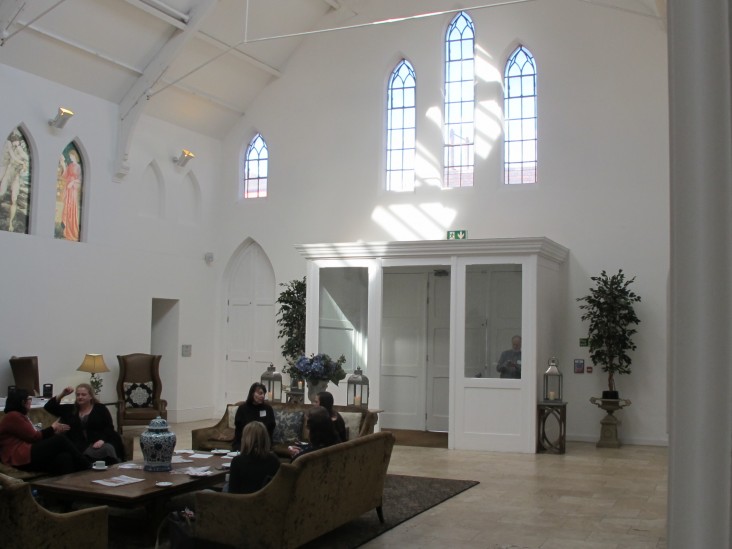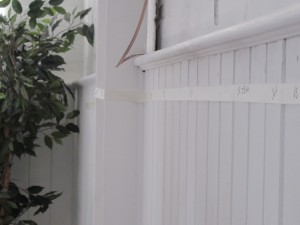‘How far have you travelled?’ Metrics for modern museums

‘How long was your journey to get here today?’ was the first question a room full of museum and cultural professionals were posed on a wet March 1st in Birmingham’s Fazeley Studios. Responses ranged from ‘half an hour’ to ‘I was up so early I can no longer remember!’ As well as providing an opportunity to compare commuter stories over coffee, Happy Museum Head of R&D Mandy Barnett, who led the session with colleague Ruth Clarke, showed how relative distances travelled might be a way of measuring the value of an event for a variety of people. We started the day by marking on a masking tape line how far we were ‘measuring what matters’ in our work. As well as getting us all out of our seats this simple tool, called ‘Where do you stand’ was a great way to start the day as it mapped the individual needs of the group.
At Happy Museum we use ‘Story of Change’ in all that we do, it keeps us on track and helps us to focus on the six principles that drive our work. Story of Change planning starts with the ‘why’ and works backwards. The Story of Change we use is a product of research gained from working with our community of practice, partners at Simetrica and Oxford Internet Institute. We started practicing using the Story of Change model on personal decision making such as ‘Should I go on holiday?’ and ‘Should I apply for a new job?’ Starting with simple examples enabled us to see how using evaluation from the start can guide potentially transformational decisions like moving house and map the wider ecological and social impacts of everyday choices.
In the afternoon we tested out the full range of Happy Museum tools, using examples from our work places. Our tools highlight the importance of using evaluation to plan and of taking a baseline for individuals, not over-claiming the difference we’ve made. Our embedded tools gather evidence through the activity itself. But we also know evaluation is sometimes an after-thought, and our review tools take account of that.
The full list of tools are available to download for free.
Being introduced to twelve new methods of evaluation was inspirational and a little exhausting! What became really apparent, however, was the transformational potential of the tools when they are used together to evaluate different elements of a creative process. The transformational power of museums lies in their creativity, and evaluation should be there to help support and promote that, Mandy reminded us that Albert Einstein once said “Logic will get you from A to B. Imagination will take you everywhere.”
Read more here about the Happy Museum approach to learning evaluation and research and our three areas of work in progress.
Subsequently we were interested to read this perspective from Alistair Brown of the MA from the conference of the National Alliance for Museums Health and Wellbeing. Here the previous Public Health Deputy, Colin Cox, cited both wellbeing and resource depletion as two of three main focuses for Public Health – along with obesity. Happy Museum responds to both of these first two together with its focus on sustainable wellbeing.
Over four years we’ve developed a range of approaches to evaluating wellbeing. We commissioned the LSE wellbeing economist Daniel Fujiwara’s Subjective Wellbeing Valuation, giving us robust and comparable evidence for the sector alongside sport, further education or employment (see also Fujiwara’s work for HACT). These approaches are: the LIFE survey, our work on museum KPI’s with national partners Julie’s Bicycle and Museums Galleries Scotland (starting with a focus on environmental evidence), and finally applying Happy Museum learning from the Story of Change to measure direct impact on the ‘social value’ of museums (a short-hand for the triple-bottom-line of economic, social and environmental impacts which is an accepted part of policy-making, referred to in HM Treasury’s guide to evaluation).
We are very happy to share our approaches, and we would also like to make an invitation for those working in museums to take this to the next step. The LIFE survey, developed with Daniel Fujiwara, asks about Learning, Interaction, Feelings and Environment. With a large dataset from a variety of museums we can analyse robustly to find the individual values for these things, and evidence as well of cause and effect from museums who participate. We can offer our experience too of using this surveying method alongside low-tech ‘friendly’ tools in the museum, including our Time Capsule, Happy Tracker and Valuation DIY.
The step after that is to put the values we identify into a social value model, where we can compare them to the investment made – absolutely critical in these austere times.
If you’d like to be part of this work over the next year, please contact our evaluator Mandy Barnett via our email link above.


